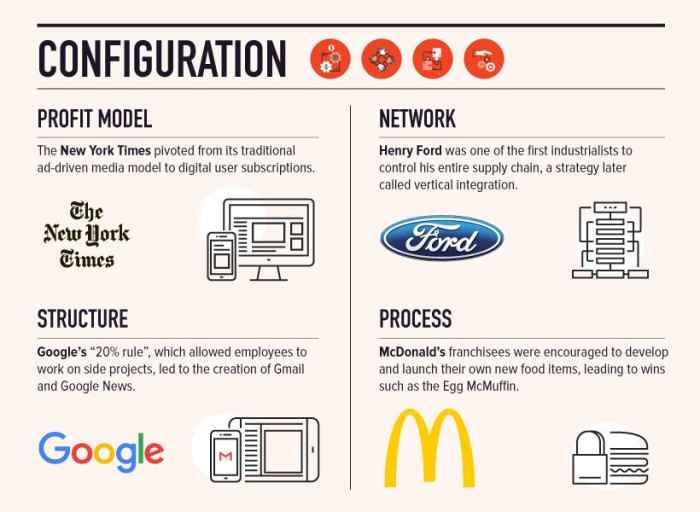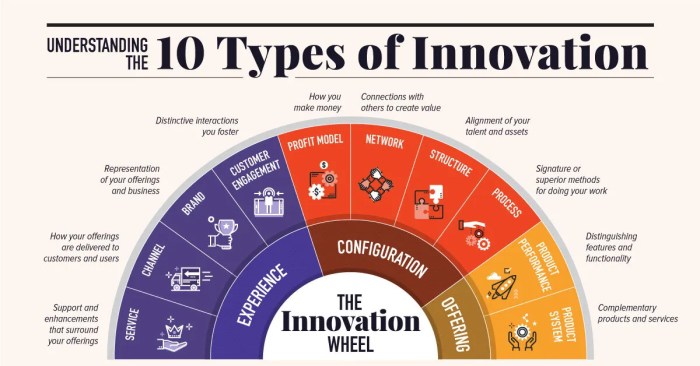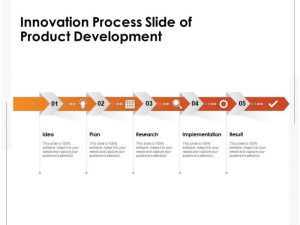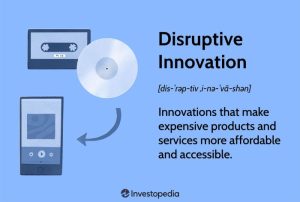
Product innovation is the lifeblood of a thriving market, constantly pushing boundaries and reshaping consumer landscapes. From incremental improvements to revolutionary breakthroughs, understanding the drivers and processes behind successful product innovation is crucial for businesses seeking competitive advantage. This exploration delves into diverse examples across various industries, examining the strategies, challenges, and ultimate impact of bringing novel products to market.
We will dissect the key stages of product development, from initial ideation and market research to the crucial launch phase and beyond. We’ll analyze successful case studies, highlighting the innovative approaches of leading companies and the role of design thinking in shaping groundbreaking products. This guide aims to provide a practical and insightful understanding of product innovation, equipping readers with the knowledge to navigate this dynamic landscape.
Product Innovation and Product Launch Strategies

Product innovation and successful product launches are intrinsically linked. A groundbreaking product, however revolutionary, will likely fail without a well-executed launch strategy. Conversely, even a modestly innovative product can achieve significant market penetration with a strong launch. The success of a new product hinges on a comprehensive understanding of the target market, a compelling value proposition, and effective communication of that value.Product innovation informs the entire launch strategy.
The degree of innovation – incremental or radical – significantly influences the marketing approach. For example, a minor improvement to an existing product might require a different marketing strategy compared to the introduction of a completely new product category. The level of consumer awareness, the need for education, and the competitive landscape all play a role in shaping the launch plan.
Marketing Strategies for Innovative Product Launches
Several marketing strategies are employed for launching innovative products, each tailored to the specific characteristics of the product and the target market. These strategies often involve a mix of traditional and digital marketing techniques. A successful launch often involves a multi-channel approach, leveraging various platforms to reach the widest possible audience. Consideration should be given to pre-launch activities, such as building anticipation and generating buzz, as well as post-launch activities, such as monitoring customer feedback and adapting the marketing strategy accordingly.
Comparison of Marketing Strategies for Incremental vs. Radical Product Innovations
| Strategy | Incremental Innovation Example | Radical Innovation Example | Expected Outcome |
|---|---|---|---|
| Targeted Advertising | A new, improved version of a popular smartphone with a slightly faster processor and better camera – advertising focuses on highlighting these specific improvements to existing users. | A revolutionary new type of personal transportation device (e.g., a flying car) – advertising focuses on establishing the new product category and its benefits. | Increased sales among existing customers (incremental) / creation of a new market segment (radical) |
| Public Relations | Press releases announcing the improved features and specifications of the smartphone; reviews in tech blogs and magazines. | Extensive media coverage, partnerships with influencers, and appearances at major technology events to generate excitement and awareness. | Positive media coverage reinforcing brand image (incremental) / building widespread brand awareness and credibility (radical) |
| Social Media Marketing | Targeted social media campaigns showcasing the new features through videos and user-generated content. | Viral marketing campaigns, influencer collaborations, and interactive online experiences to create a buzz and build a community around the product. | Increased engagement and brand loyalty (incremental) / rapid dissemination of information and user adoption (radical) |
| Early Adopter Programs | Offering early access to the new smartphone to loyal customers or tech reviewers for feedback and testimonials. | Offering beta testing opportunities to a select group of users to gather feedback and refine the product before a wider launch. | Valuable customer feedback and early adoption (incremental) / crucial product refinement and early market validation (radical) |
Challenges and Risks in Product Innovation

Product innovation, while offering significant potential for growth and market leadership, is fraught with challenges and risks. Successfully navigating this complex landscape requires a deep understanding of the potential pitfalls and a proactive approach to mitigation. Failing to do so can lead to significant financial losses and damage to a company’s reputation.Companies embarking on product innovation journeys frequently encounter unforeseen obstacles.
These hurdles can significantly impact timelines, budgets, and ultimately, the success of the new product. Understanding these challenges is crucial for developing effective strategies to overcome them.
Common Challenges in the Product Innovation Process
Three prevalent challenges companies face during product innovation are resource constraints, technological uncertainties, and market uncertainties. Resource constraints encompass limitations in funding, personnel, and time. Technological uncertainties involve the risks associated with developing and implementing new technologies, including unforeseen technical difficulties and the potential for obsolescence. Market uncertainties include the difficulty of accurately predicting consumer demand and the potential for competitive responses.
These challenges are interconnected and often exacerbate one another. For example, insufficient funding can limit the resources available to address technological uncertainties, potentially delaying product launch and increasing vulnerability to competition.
Risks Associated with New Product Launches
Launching a new product carries inherent risks, primarily market failure and intense competition. Market failure occurs when a product fails to gain traction with consumers, leading to low sales and potentially significant financial losses. This can stem from poor market research, inadequate product design, ineffective marketing, or simply a lack of consumer interest. Intense competition arises when established players or new entrants aggressively challenge the new product’s market share.
This can lead to price wars, increased marketing expenditure, and reduced profitability. Consider, for example, the numerous smartphone innovations that have failed to achieve significant market penetration due to competition from established brands with strong brand loyalty and extensive distribution networks.
Illustrative Depiction of Product Launch Risks
Imagine a dartboard representing the target market. The bullseye represents the ideal customer segment for the new product. However, the darts (representing the product launch) are scattered across the board. Some darts miss the board entirely, symbolizing complete market failure – the product doesn’t reach the intended audience. Others land far from the bullseye, indicating a smaller-than-expected market share due to competition or inaccurate market analysis.
A few darts might hit close to the bullseye, representing partial success, but not the anticipated market penetration. This visual demonstrates the inherent uncertainty and risk involved in launching a new product, highlighting the potential for various outcomes, from complete failure to only partial success.
Ultimately, successful product innovation hinges on a deep understanding of market needs, a robust development process, and a well-executed launch strategy. By carefully considering the challenges and risks involved, and by leveraging data-driven insights and iterative feedback, businesses can significantly increase their chances of creating products that not only meet consumer demands but also redefine industry standards. The examples presented serve as a testament to the transformative power of innovation and the ongoing evolution of product development.
FAQ Guide
What is the difference between disruptive and sustaining innovation?
Disruptive innovation creates new markets and value networks, eventually disrupting existing markets and value networks, often by initially targeting underserved customers. Sustaining innovation improves existing products and services for existing customers.
How can a company measure the ROI of product innovation?
Measuring ROI involves tracking key performance indicators (KPIs) such as sales growth, market share, customer satisfaction, and return on investment of R&D spending. A comprehensive analysis of these metrics provides a clearer picture of the financial impact.
What are some common pitfalls to avoid in the product innovation process?
Common pitfalls include neglecting market research, failing to adapt to changing consumer needs, underestimating competition, and insufficient testing before launch.






